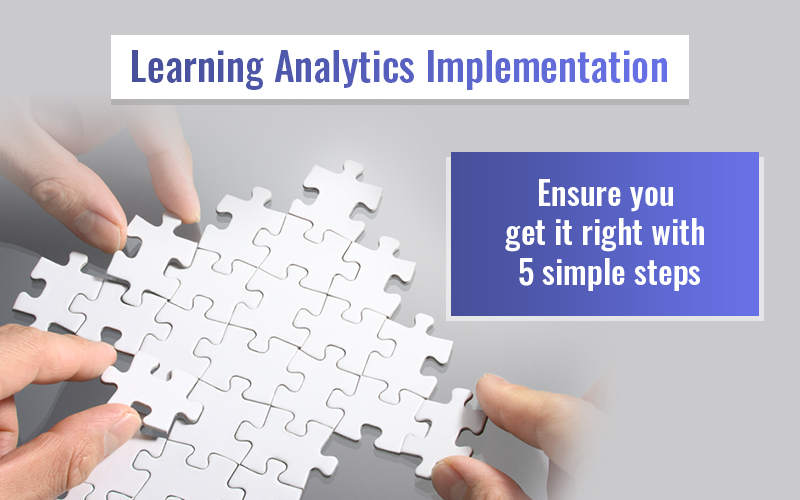Implementing Learning Analytics for Microlearning? 3 Enabling Options
Learning analytics is a trend that’s catching on and can be used to measure the impact of learning. This blog post gives you insights into the enabling options to implement learning analytics for microlearning.

The digital world with plenty of distractions leaves learners with limited attention spans and very little time for learning. But when you are spearheading learning and development in your organization, it becomes your business to leverage technology to deliver effective learning, and also ensure that learners retain the knowledge. How can you do this? For L&D professionals in this dilemma, microlearning has emerged as a savior. Bite-sized nuggets of information delivered in various forms such as videos, podcasts, infographics, quizzes and so on, make it possible for learners to quickly complete learning modules, even while on-the-move.
Planning to Implement Learning Analytics for Microlearning?
Here are 3 Enabling Options That’s Must:
- Learning Management System (LMS)
- Server with Dashboard Analytics
- Web Server
In order to measure the impact of microlearning on learners, it is essential that the learning activity is tracked. The data gathered through tracking is analyzed with the help of learning analytics. Let’s take an example of a microlearning asset such as an infographic.
Applying learning analytics can answer a couple of questions like:
- How many learners viewed the infographic?
- How frequent were the views?
- Did the infographic facilitate on-the-job performance?
Before you go ahead with implementing learning analytics to measure the impact of microlearning in your organization, you are required to work closely with the IT team to finalize an enabling option, or to put it more simply, the technology solution that you will need.
3 Enabling Options to Implement Learning Analytics for Microlearning
1. Learning Management System (LMS)
The LMS is at the heart of any organization’s learning environment. The usage of a microlearning asset can be tracked through an LMS, and reports can be generated on the same.
Consider a scenario where the sales training manager of an organization wants the sales teams across the globe to go through a sales simulation. The simulation is deployed on the LMS as a microlearning module. Now, the sales training manager would like to track the progress of learners on this microlearning activity. Is it possible?
Of course, that’s where the inbuilt analytics capability of a modern LMS comes in handy. By using learning analytics through an LMS, you can track the microlearning assets :
- Reach
- Time taken for completion
- Effectiveness
The LMS also facilitates the generation of reports. This can be used to drill down into details that can be used to improve the microlearning nugget.
→ Access Recording: How Does a New-Age LMS Maximize Your Training ROI [Webinar]
2. Server with Dashboard Analytics
Organizations with a modern LMS will already have access to a learning analytics dashboard. But those who do not have an LMS, or have a traditional LMS, can consider dashboard analytics that can be integrated with an existing server or learning platform.
A dashboard is a visual display of the information gathered through learning analytics. Since this information is consolidated and displayed on a single screen, it is easier to monitor the engagement levels of learners going through the microlearning module.
Dashboard analytics can display:
- Real time data on the usage of the microlearning asset.
- The number of learners who have viewed the microlearning assets.
- The list of learners who have viewed the microlearning asset the most number of times.
3. Web Server
If your organization is involved in training external customers and channel partners infrequently, and does not want to invest in an extended enterprise LMS, then a web server should suffice. Microlearning assets hosted on the web portal are accessible to visitors. Every web server has log files that track events on the website, right from the time a learner clicks on the website to the time he leaves the website. Though the analytics data gathered through a web server may not give you detailed insights like an LMS, it can help you understand the following:
- Where are the learners from (country or region)?
- How much time did they spend on the portal?
- Which microlearning module did the learner access?
Parting Thoughts
For an organization that’s involved in the continual training of employees, the best enabling option to implement learning analytics for bite-sized modules would be through the LMS. Have you implemented microlearning in your organization? If yes, do you use learning analytics to measure its effectiveness? Not yet? Grab this eBook if you are looking to get started with Learning Analytics.
Editor’s note: This post was originally published in 2018 and has been updated for comprehensiveness.





